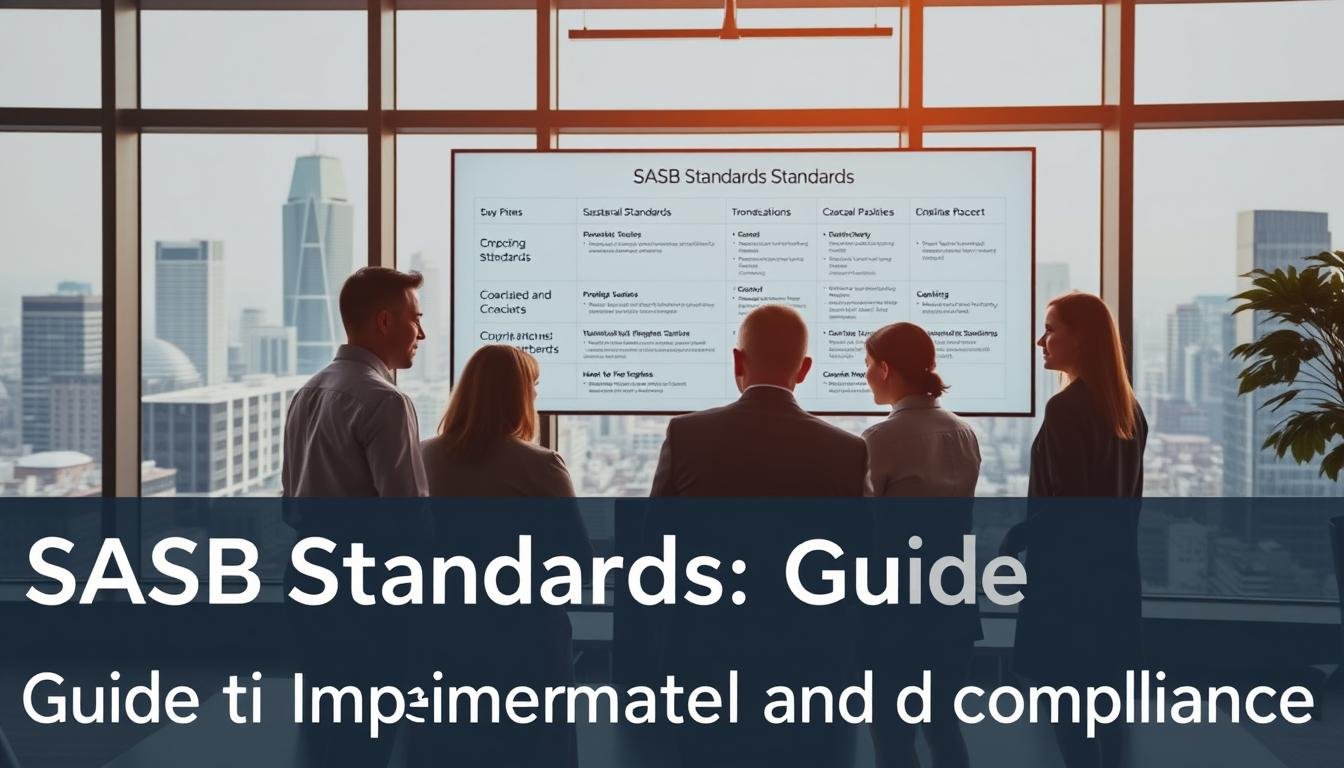What sets successful nonprofit organizations apart from others, and how can effective nonprofit leadership make a significant difference in achieving their mission? Nonprofit leadership plays a crucial role in guiding organizations towards their goals, and it is essential to develop strategies that maximize impact with limited resources. Nonprofit management and leadership development are critical components of a nonprofit’s success, as they directly influence the organization’s ability to deliver programs and services.
Effective nonprofit leaders must possess skills such as financial management, fundraising, and communication to build strong relationships with stakeholders and maintain a clear focus on the organization’s mission and values. Nonprofit leadership is not just about managing resources, but also about inspiring and motivating teams to work towards a common goal. As nonprofit organizations continue to face challenges in 2025, it is essential to adapt and develop new strategies for impactful leadership.
Key Takeaways
- Nonprofit leadership is critical to achieving organizational goals and maximizing impact with limited resources.
- Effective nonprofit leaders must develop skills such as financial management, fundraising, and communication.
- Nonprofit management and leadership development are essential components of a nonprofit’s success.
- Building strong relationships with stakeholders is vital for ongoing support and success.
- Continuous learning and personal development are necessary for effective nonprofit leadership.
- Nonprofit leadership programs and resources, such as those offered by the Nonprofit Leadership Lab and DonorPerfect, can provide valuable tools and strategies for success.
Understanding Nonprofit Leadership
Nonprofit leadership is a unique blend of vision, passion, and pragmatism, requiring leaders to steer their organizations towards their mission while navigating the complexities of the nonprofit sector. Effective nonprofit leaders must possess certain key characteristics, such as the ability to inspire and motivate their teams, manage resources efficiently, and build strong relationships with stakeholders.
In the context of nonprofit governance, leadership strategy is crucial for driving organizational success. Nonprofit organizations constitute numerous entities providing a wide range of services, and their leaders must be equipped to address the challenges and opportunities that arise in the nonprofit sector. By investing in employee knowledge and skills, nonprofits can see a substantial return on investment, leading to increased staff satisfaction and retention.
Key Characteristics of Effective Leaders
Effective nonprofit leaders are those who can balance the needs of their organization with the needs of their stakeholders, including staff, volunteers, and the communities they serve. They must be able to communicate their vision and strategy clearly, while also being adaptable and resilient in the face of change. By prioritizing transparency, accountability, and diversity, equity, and inclusion, nonprofit leaders can build trust and foster a positive organizational culture.
As the nonprofit sector continues to evolve, leaders must be prepared to navigate the challenges and opportunities that arise. This includes addressing the impacts of the COVID-19 pandemic, social and political divides, and the shift towards justice, equity, diversity, and inclusion. By embracing these challenges and prioritizing effective leadership strategies, nonprofits can thrive and make a meaningful difference in the lives of those they serve.
The Role of Vision in Nonprofit Leadership
Nonprofit organizations that effectively articulate their vision may increase stakeholder engagement and support by up to 50%. A clear and compelling vision is essential for nonprofit leaders to inspire and motivate their teams, as well as to communicate the organization’s mission and goals to stakeholders. Effective leadership in nonprofits requires a well-defined vision that guides decision-making and strategic direction.
Crafting a Compelling Vision
Approximately 30% of nonprofits note that revisiting their vision statement every 3-5 years led to a renewed focus and clarity in their strategic direction. Nonprofit leaders must be able to craft a vision that is aligned with the organization’s mission and values, and that inspires and motivates their team to work towards achieving it. This requires strong nonprofit leadership skills, including the ability to communicate effectively and build stakeholder support.
Communicating Your Vision to Stakeholders
Studies show that organizations with a clear vision statement see a 25% higher rate of goal achievement than those without a defined vision. Roughly 70% of nonprofit leaders believe that a strong vision is essential for long-term sustainability and impact. By effectively communicating their vision to stakeholders, nonprofit leaders can build trust, engagement, and support for their organization’s mission and goals, ultimately driving effective leadership and success in the nonprofit sector.
Building Strong Organizational Culture
Nonprofit organizations require a strong organizational culture to achieve their missions and goals. This can be accomplished through effective leadership training and nonprofit management. A strong culture fosters collaboration, inclusion, and innovation, leading to increased employee satisfaction and engagement.
Fostering Collaboration and Inclusion
Companies with strong organizational cultures experience 30% higher employee satisfaction and engagement rates. Incorporating diversity, inclusion, and belonging initiatives can make organizations 1.7 times more likely to be innovative and effective in achieving financial goals. Leadership training plays a crucial role in promoting these values and creating a positive work environment.
Promoting Accountability and Transparency
Nonprofit management involves promoting accountability and transparency within the organization. This can be achieved by investing in employee engagement, which sees a 20% increase in productivity and a 25% increase in profits. By prioritizing inclusivity, organizations can improve their talent acquisition metrics by 30%, leading to a broader pool of candidates.
Encouraging Innovation and Adaptability
Encouraging innovation and adaptability is essential for nonprofit organizations to stay competitive. Effective leadership training and nonprofit management can help create a culture that values innovation and creativity. By doing so, organizations can experience higher revenue growth and improved employee satisfaction, ultimately leading to a more successful and sustainable nonprofit organization.
Strategic Planning for Nonprofit Success
Effective nonprofit governance and leadership strategy are crucial for achieving organizational goals. Nonprofit leaders must develop a strategic plan that aligns with the organization’s mission and values. This plan should set clear goals and objectives, and establish a framework for measuring impact and outcomes.
Setting Goals and Objectives
A well-crafted strategic plan enables nonprofits to prioritize their efforts, allocate resources efficiently, and make informed decisions. By setting specific, measurable, and achievable goals, nonprofit leaders can ensure that their organization is working towards a common purpose. This, in turn, enhances nonprofit governance and leadership strategy, allowing organizations to better serve their constituents.
Measuring Impact and Outcomes
Nonprofit leaders must also be able to measure the impact and outcomes of their organization’s efforts. This involves tracking key performance indicators, conducting regular evaluations, and making adjustments to the strategic plan as needed. By doing so, nonprofits can demonstrate their effectiveness, build trust with stakeholders, and secure funding to support their mission. Strong nonprofit governance and leadership strategy are essential for achieving long-term success and creating lasting positive change.
Financial Management in Nonprofit Organizations
Effective financial management is crucial for nonprofit organizations to achieve their mission and ensure sustainability. Nonprofit management involves overseeing the financial aspects of the organization, including budgeting, financial reporting, and diversifying funding sources. Leadership development in this area is essential to make informed decisions and maintain transparency and accountability.
According to research, nonprofits with diversified funding sources are 45% more likely to achieve financial stability. This highlights the importance of exploring various funding streams, such as grants, donations, and corporate sponsorships. Nonprofit leaders must also prioritize financial literacy and provide training for staff to enhance their understanding of financial decision-making.
Budgeting Basics for Nonprofits
A well-structured budget is vital for nonprofit organizations to allocate resources effectively. This includes tracking expenses, income, and cash flow to ensure compliance with governance standards. Nonprofit finance software can aid in streamlining financial processes, reducing manual entry, and providing a clear audit trail for financial transactions.
Diversifying Funding Sources
Diversifying funding sources is critical to reduce dependence on a single source of funding. Nonprofit leaders must develop a strategy to attract various funding streams, including individual donations, foundation grants, and corporate sponsorships. By doing so, they can mitigate financial risks and ensure the long-term sustainability of their organization.
Leading Through Change
Nonprofit leaders face numerous challenges, including generative AI, fundraising headwinds, and employee well-being. To navigate these changes, effective leadership is crucial. Leaders must be able to adapt and make informed decisions to ensure their organization’s mission and goals are achieved.
Navigating Organizational Transformations
Organizational transformations can be difficult, but with nonprofit leadership skills, leaders can guide their teams through these changes. It is essential to communicate effectively with stakeholders and prioritize employee well-being. By doing so, leaders can build trust and foster a positive organizational culture.
Managing Stakeholder Expectations
Managing stakeholder expectations is vital for nonprofit leaders. This involves being transparent, accountable, and responsive to the needs of stakeholders. By prioritizing effective leadership and nonprofit leadership skills, leaders can build strong relationships with stakeholders and ensure the long-term success of their organization.
Board Governance and Leadership
Effective nonprofit governance is crucial for the success of any organization. A well-structured board with a clear leadership strategy can make a significant difference in achieving the organization’s mission. Nonprofit governance involves the roles and responsibilities of board members, who are responsible for overseeing the organization’s operations and making strategic decisions.
A key aspect of nonprofit governance is building an effective board that is diverse and inclusive. This includes recruiting board members with the right skills, experience, and passion for the organization’s mission. According to recent data, nonprofit boards typically range from 3 to 50 members, and most states require them to meet at least once a year. A common recommendation is for boards to meet a few times throughout the year for effective governance.
Roles and Responsibilities of Board Members
Board members have distinct responsibilities, including governance, finance, and executive decisions. The Governance Committee within the board is tasked with recruiting new board members and determining their suitability. Key leadership roles within nonprofit boards include the President, Secretary, and Treasurer, each with distinct responsibilities in governance and management.
An effective board member should demonstrate competence in necessary areas, including emotional aptitude and problem-solving capabilities. Recruitment quality indicators include the four C’s: Culture, Character, Competence, and Connections. By prioritizing these factors, nonprofit organizations can build a strong and effective board that supports their leadership strategy and contributes to their overall success.
Developing Future Leaders in Nonprofits
Nonprofit organizations rely on effective leadership to drive their mission and achieve their goals. To ensure the sustainability and growth of these organizations, it is essential to develop future leaders through leadership training and nonprofit management practices. According to the 70-20-10 model, 70 percent of leadership development should happen through on-the-job learning, 20 percent through coaching and mentoring, and 10 percent through formal learning.
Mentorship and Succession Planning
Mentorship and succession planning are critical components of leadership development in nonprofits. By providing mentorship and succession planning, nonprofit leaders can ensure that the organization has a strong pipeline of future leaders. This includes identifying areas for development and providing opportunities for employees to gain new leadership skills through on-the-job training and coaching.
Leadership Development Programs
Leadership development programs are essential for developing future leaders in nonprofits. These programs should be aligned with the organization’s mission and values and provide opportunities for employees to develop leadership skills through formal training, coaching, and mentoring. By investing in leadership development programs, nonprofit organizations can ensure that they have the talent and expertise needed to drive their mission and achieve their goals.
Communication Strategies for Nonprofit Leaders
Effective leadership in nonprofit organizations relies heavily on the ability to communicate effectively with stakeholders. Nonprofit leaders must develop a communication strategy that is aligned with the organization’s mission and values. This includes engaging stakeholders effectively and utilizing social media for outreach. By doing so, nonprofit leaders can build trust and credibility with stakeholders, promoting the organization’s mission and goals.
Engaging Stakeholders Effectively
Nonprofit leaders must be able to communicate effectively with stakeholders, including board members, donors, and the community. This can be achieved by developing a communication plan that takes into account the needs and preferences of each stakeholder group. By engaging stakeholders effectively, nonprofit leaders can build strong relationships and foster a sense of community and ownership.
Utilizing Social Media for Outreach
Social media is a powerful tool for nonprofit leaders to reach stakeholders and promote the organization’s mission and goals. By utilizing social media platforms, nonprofit leaders can share updates, news, and stories about the organization’s work, engaging stakeholders and building a community of supporters. Effective leadership in nonprofit organizations requires a strong online presence, and social media is an essential component of this. Nonprofit leadership skills, such as communication and outreach, are critical to the success of nonprofit organizations, and social media can be a key tool in developing these skills.
Evaluating Leadership Effectiveness
Effective nonprofit leadership is essential for achieving lasting impact, and regularly evaluating leadership performance is crucial. By developing key performance indicators tailored to the organization’s nonprofit governance and leadership strategy, leaders can assess their own effectiveness and identify areas for improvement. Gathering comprehensive feedback from stakeholders, including staff, volunteers, board members, and the communities served, provides a well-rounded perspective on leadership impact.
Research shows that nonprofits with clear, measurable goals can see up to 30% more improvement in leadership evaluations. Furthermore, the use of 360-degree assessments can reveal 35% more areas for skill development compared to traditional methods. Aligning leadership actions with core organizational values also maintains a 20% higher level of trust among stakeholders. Ultimately, a commitment to continuous learning and personalized development plans can enhance staff engagement by 15% and increase leadership retention rates by 25% within the nonprofit sector.
FAQ
What is nonprofit leadership and why is it important?
Nonprofit leadership refers to the management and guidance provided by individuals in upper-level roles within nonprofit organizations. Effective nonprofit leaders inspire and motivate their teams, manage resources efficiently, and build strong relationships while maintaining a clear focus on the organization’s mission and values. Nonprofit leadership is essential for ensuring the success and impact of nonprofit organizations.
What are the key characteristics of effective nonprofit leaders?
Effective nonprofit leaders possess characteristics such as the ability to inspire and motivate their teams, manage resources efficiently, and build strong relationships with stakeholders. They must also have a clear vision for the organization and the ability to communicate it effectively.
How can nonprofit leaders craft a compelling vision for their organization?
Nonprofit leaders must be able to craft a vision that is aligned with the organization’s mission and values, and that inspires and motivates their team to work towards achieving it. This requires a deep understanding of the organization’s purpose and the ability to communicate it effectively to stakeholders.
Why is building a strong organizational culture important for nonprofit leaders?
A strong organizational culture is essential for nonprofit organizations to achieve their missions and goals. Nonprofit leaders must be able to build a culture that is collaborative, inclusive, and innovative, and that promotes accountability and transparency.
How can nonprofit leaders develop effective strategic plans for their organizations?
Strategic planning is essential for nonprofit organizations to achieve their missions and goals. Nonprofit leaders must be able to develop a strategic plan that is aligned with the organization’s mission and values, and that sets clear goals and objectives. They must also be able to measure impact and outcomes to ensure that the organization is achieving its goals.
What are the key financial management considerations for nonprofit leaders?
Nonprofit leaders must be able to manage the organization’s finances to ensure its sustainability and growth. This includes developing a budget that is aligned with the organization’s mission and goals, and diversifying funding sources to reduce dependence on a single source of funding.
How can nonprofit leaders effectively navigate organizational change and manage stakeholder expectations?
Nonprofit leaders must be able to lead their organizations through change, including navigating organizational transformations and managing stakeholder expectations. This requires a deep understanding of the organization’s mission and values, as well as the ability to communicate effectively with stakeholders.
What are the key responsibilities of a nonprofit board of directors, and how can leaders build an effective board?
Nonprofit leaders must be able to build an effective board that is aligned with the organization’s mission and values. This includes understanding the roles and responsibilities of board members, and building a board that is diverse and inclusive.
How can nonprofit leaders develop future leaders within their organizations?
Nonprofit leaders must be able to develop future leaders to ensure the sustainability and growth of the organization. This includes providing mentorship and succession planning, as well as developing leadership development programs that are aligned with the organization’s mission and values.
What communication strategies are important for nonprofit leaders to engage stakeholders effectively?
Nonprofit leaders must be able to communicate effectively with stakeholders to build trust and credibility, and to promote the organization’s mission and goals. This includes developing a communication strategy that is aligned with the organization’s mission and values, and that utilizes social media and other digital channels to reach stakeholders.
How can nonprofit leaders evaluate the effectiveness of their leadership and that of their teams?
Nonprofit leaders must be able to evaluate their own effectiveness, as well as the effectiveness of their team, to ensure that the organization is achieving its mission and goals. This includes developing key performance indicators that are aligned with the organization’s mission and values, and gathering and analyzing feedback from stakeholders to identify areas for improvement.





